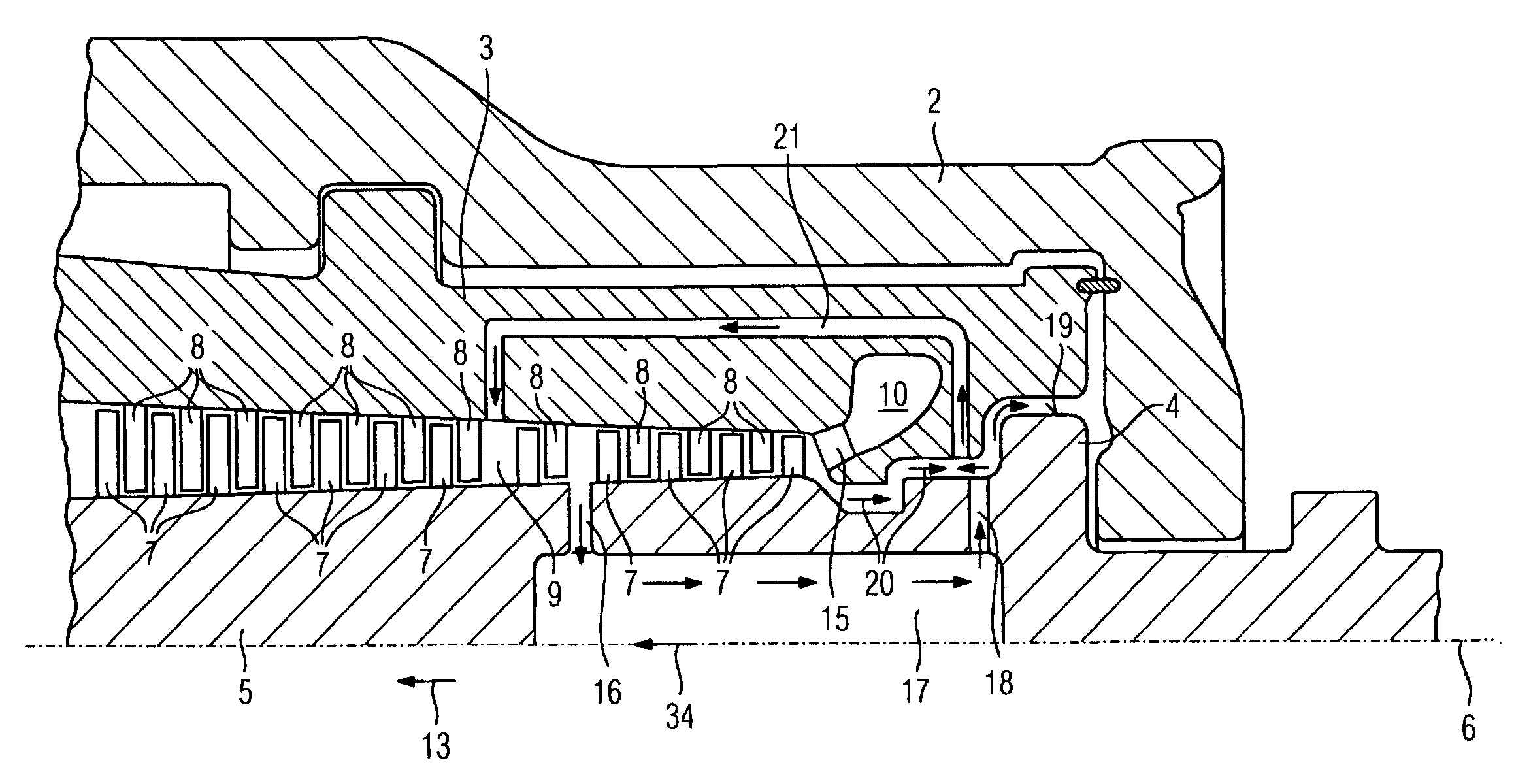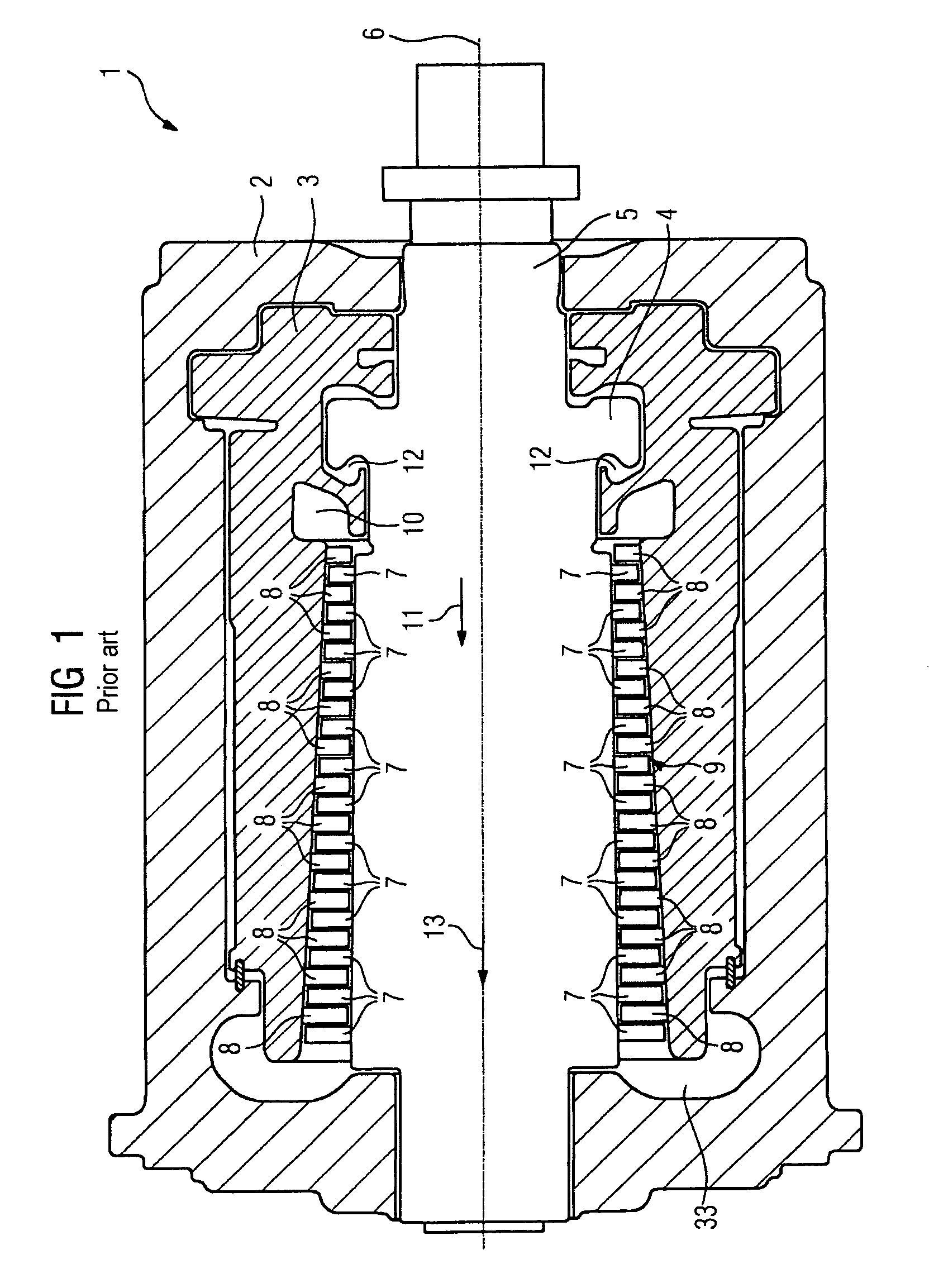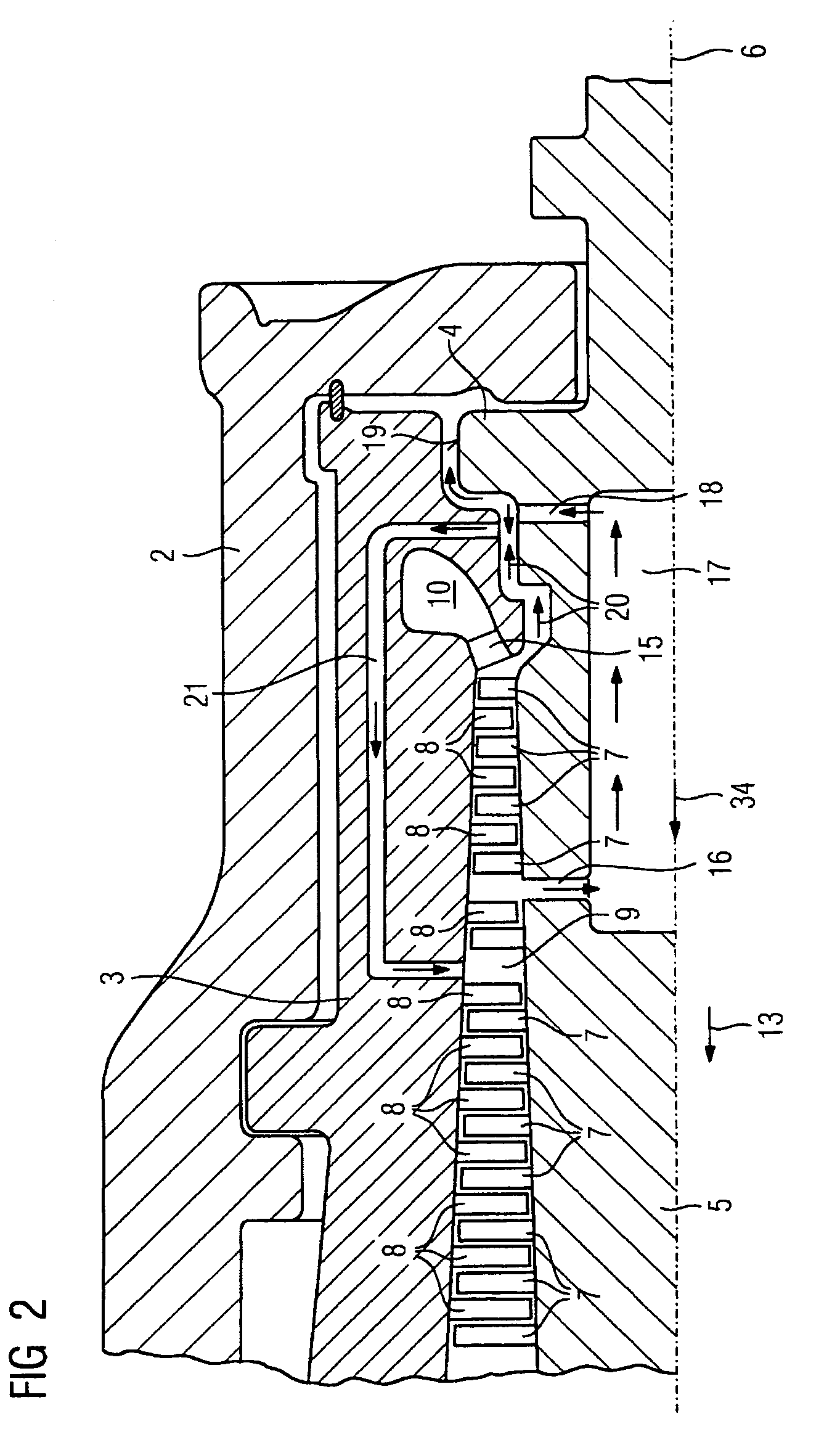Steam turbine
a steam turbine and casing technology, applied in the field of steam turbines, can solve the problems of limited temperature difference over the inner casing wall, inability to realize the open cooling system, and inability to meet the requirements of gas turbines, so as to achieve the effect of increasing steam turbine efficiency, reducing the cost of shaft monitoring, and quick availability of power
- Summary
- Abstract
- Description
- Claims
- Application Information
AI Technical Summary
Benefits of technology
Problems solved by technology
Method used
Image
Examples
Embodiment Construction
[0056]In FIG. 1, a section through a high-pressure turbine section 1 according to the prior art is shown. The high-pressure turbine section 1, as an embodiment of a steam turbine, comprises an outer casing 2 and an inner casing 3 which is arranged therein. Inside the inner casing 3, a turbine shaft 5 is rotatably mounted around a rotational axis 6. The turbine shaft 5 comprises rotor blades 7 which are arranged in slots on a surface of the turbine shaft 5. The inner casing 3 has stator blades 8 which are arranged in slots on its inner surface. The stator blades 8 and rotor blades 7 are arranged in such a way that a flow passage 9 is formed in a flow direction 13. The high-pressure turbine section 1 has an inlet region 10 through which live steam flows into the high-pressure turbine section 1 during operation. The live steam can have steam parameters of over 300 bar and over 620° C. The live steam, which expands in the flow direction 13, flows in turn past the stator blades 8 and rot...
PUM
 Login to View More
Login to View More Abstract
Description
Claims
Application Information
 Login to View More
Login to View More - R&D
- Intellectual Property
- Life Sciences
- Materials
- Tech Scout
- Unparalleled Data Quality
- Higher Quality Content
- 60% Fewer Hallucinations
Browse by: Latest US Patents, China's latest patents, Technical Efficacy Thesaurus, Application Domain, Technology Topic, Popular Technical Reports.
© 2025 PatSnap. All rights reserved.Legal|Privacy policy|Modern Slavery Act Transparency Statement|Sitemap|About US| Contact US: help@patsnap.com



